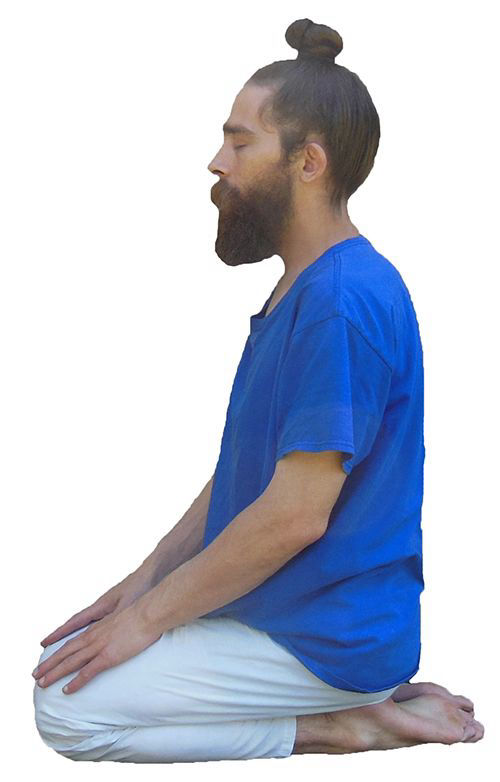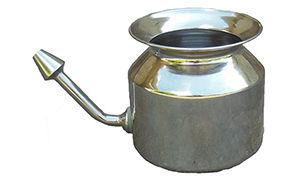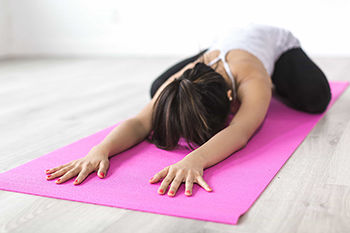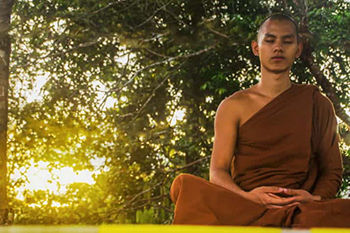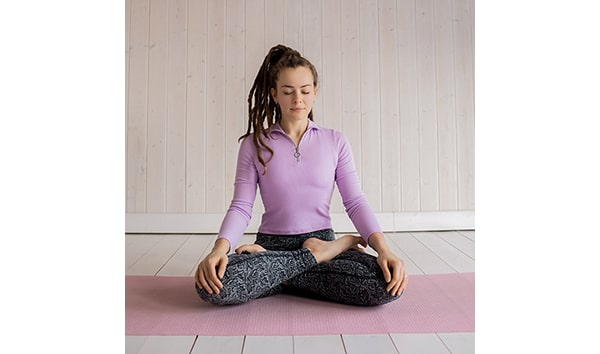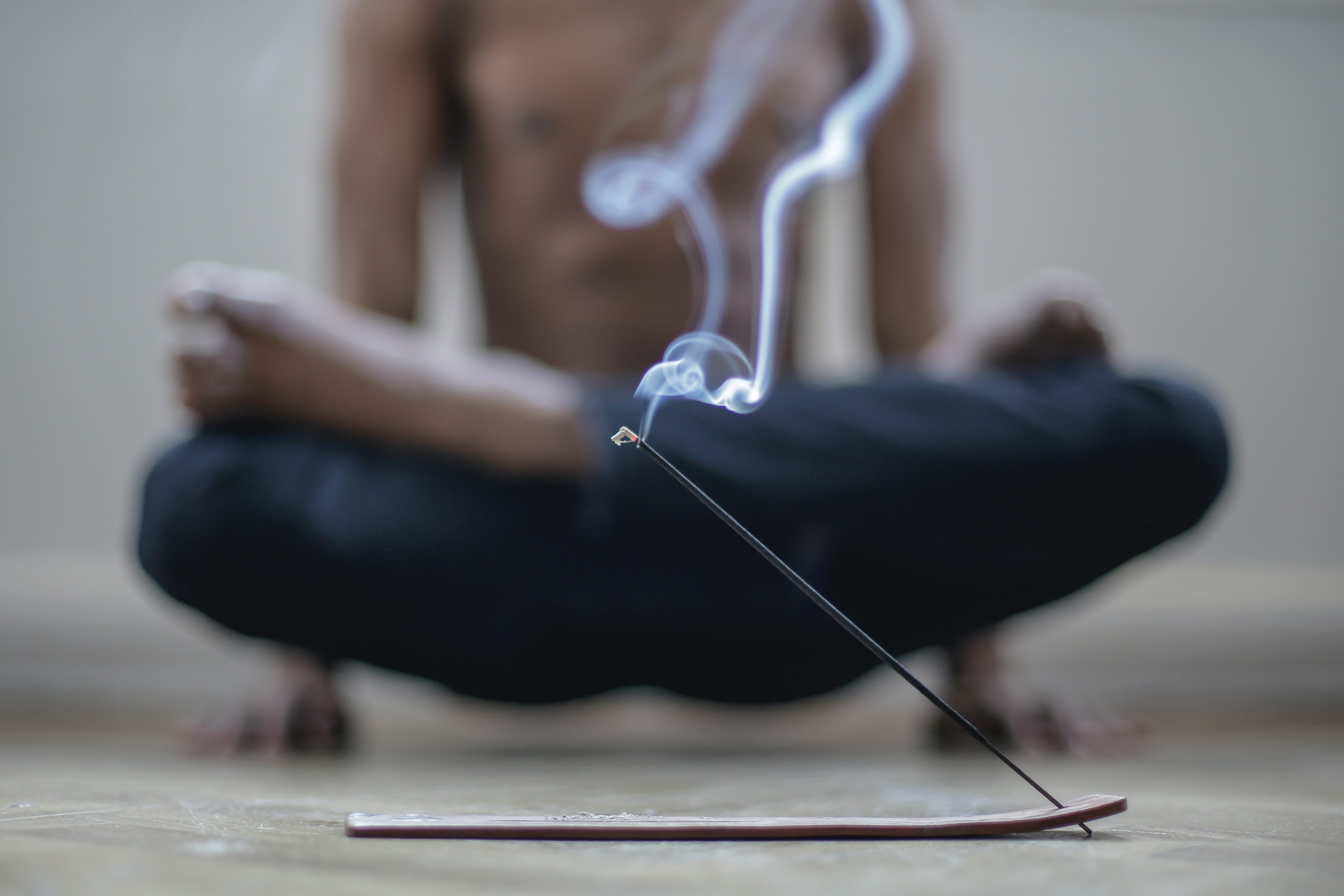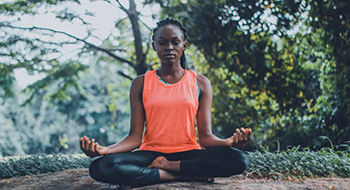Practice
Kneel on the mat with the knees close together and sitting on the heels.
Bring the big toes together and separate the heels.
Lower the buttocks onto the inside surface of the feet with the heels touching the sides of the hips.
Place the hands on the knees, palms down.
The back and head should be straight but not tense.
Close the eyes, relax the arms and the whole body.
